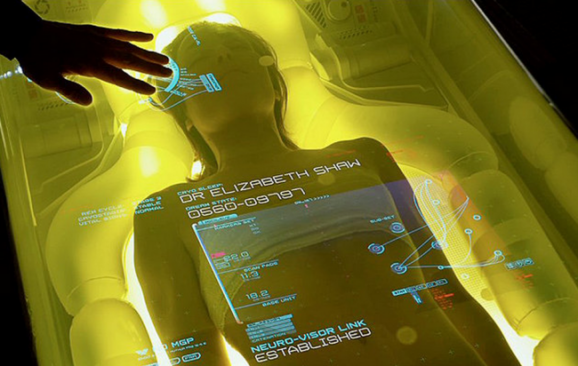Human Suspended Animation Trials Are Set To Begin
This article is more than 2 years old
 Bears will tell you hibernation is the best way to weather a brutal winter. It may also be the best way to make it through long-distance spaceflights or to survive life-threatening injuries. Researchers have figured out ways to induce suspended animation in worms, frogs, fruit flies, and pigs, and will soon conduct human trials.
Bears will tell you hibernation is the best way to weather a brutal winter. It may also be the best way to make it through long-distance spaceflights or to survive life-threatening injuries. Researchers have figured out ways to induce suspended animation in worms, frogs, fruit flies, and pigs, and will soon conduct human trials.
While this may eventually become a way to get humans to the far-flung corners of the galaxy, Pittsburgh’s UPMC Presbyterian Hospital is experimenting with the technique to save lives. Placing injured patients in suspended animation is a way to buy time. The human body can’t last long—only a few minutes—without blood pumping to its organs, but suspended animation might increase survival time. Rather than externally lowering the patient’s body temperature, this trial involves replacing blood with a cooled down saline solution. This will slow down body functions and cellular activity, which also makes the body less dependent on oxygen.
Given the science fiction connotations associated with the term “suspended animation,” surgeons prefer to call the process “emergency preservation and resuscitation.” Well, yeah, that does sound a lot less fun. Heart and brain surgeons already use ice to lower body temperatures for surgery, but external cooling takes a while and has to be done carefully to avoid shock. Such techniques aren’t feasible for critical patients in the ER, which is the group this trial targets.
Doctors will attempt to use the technique to save the lives of 10 emergency room patients with knife or gunshot wounds that have caused cardiac arrest. If responses to restart their hearts don’t work, the special team will come in and work on the patients. The extra time surgeons gain with the cold saline infusion shouild make it possible to repair the injuries without losing more blood or oxygen, as well as avoid the dangers of sudden resuscitation. After the surgeons make whatever repairs are necessary, they’ll gradually warm the patients back up by putting their blood back in. This technique was successful in pigs over a decade ago. Some subjects did need a jumpstart to get their hearts beating, but even in those cases, they didn’t suffer any negative effects from the procedure.
 One of the weirder aspects of the technique is that after the saline is pumped into the patient’s body, they will experience clinical death. “We’ve always assumed that you can’t bring back the dead. But it’s a matter of when you pickle the cells,” says surgeon Peter Rhee who developed the technique. This might sound extreme, but in such cases, patients only have a small chance of survival. These are fatal injuries for which there is no other treatment, so the FDA doesn’t require informed consent (it does, however, allow people to opt out).
One of the weirder aspects of the technique is that after the saline is pumped into the patient’s body, they will experience clinical death. “We’ve always assumed that you can’t bring back the dead. But it’s a matter of when you pickle the cells,” says surgeon Peter Rhee who developed the technique. This might sound extreme, but in such cases, patients only have a small chance of survival. These are fatal injuries for which there is no other treatment, so the FDA doesn’t require informed consent (it does, however, allow people to opt out).
This process will almost certainly be used on the battlefield (probably after further developed by DARPA) to help soldiers survive life-threatening injuries sustained in combat. It could also come in handy if you find out you’re pregnant with an alien.












